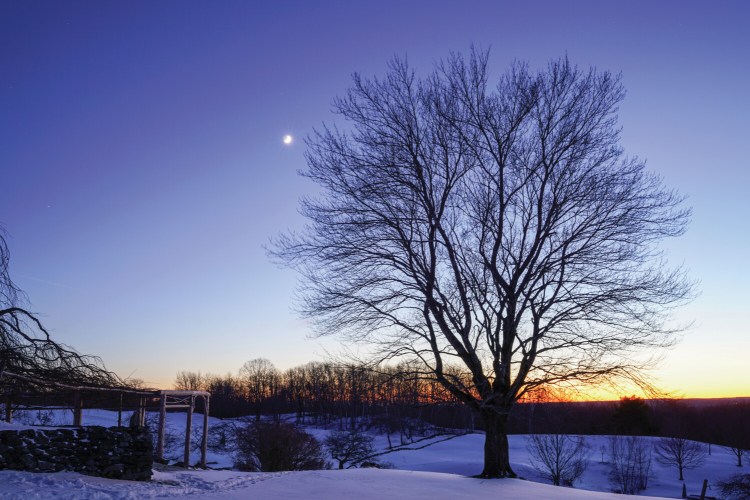If a garden looks beautiful in winter, it is highly likely that it will look good the rest of the year, as well.
That is the premise of “Winterland: Create a Beautiful Garden for Every Season” by Cathy Rees of Blue Hill, with photographs by Lisa Looke.
If homeowners like what they see in winter when the perennial plants have died back and the deciduous trees are leafless, that beauty will only be enhanced when the leaves emerge and the flowers start blooming, Rees said in a telephone interview. “In the winter, the garden is all about contrasts, about light and shadows,” she said.
Although she encourages people to spend as much time as possible outside during the winter, she suggests they design a winter garden so that it looks good to a person who is inside the house looking out – especially from spots like the kitchen sink, the home office or the exercise room, where people probably spend a lot of time.
The book is divided into five sections: design, creating contrasts, embellishments, maintenance and sharing the garden with others, including wildlife.

A garden of hardy plants does not need winter protection, author Cathy Rees writes in “Winterland.” Photo by Lisa Looke/courtesy of Princeton Architectural Press
One design tip that struck me is her suggestion to plant a deciduous tree at a distance so the branches contrast to rosy winter sunrises and sunsets, which are usually more stunning and longer-lasting in winter than at other times of the year. Rees also describes how trees can be pruned to create exciting contrasts when there are no leaves, and how shrubs can be planted to create interesting textures, whether they are covered with snow or not.
A garden does not have to be especially large to create features that look good in winter. Adding a focal point – whether a shrub, or a piece of art or furniture – as little as 10 or 15 feet away from the house will work on a small lot, Rees said. And with more miniature plants being introduced, homeowners have a lot of options.
“Winterland” includes a couple hundred photos, most taken in winter, late fall or early spring, which form a large part of the book’s enjoyment. Rees and photographer Lisa Looke did not know each other before they began working on the project together, but Rees was familiar with Looke’s photos for the nonprofit Wild Seed Project. Looke also manages Wild Seed Project’s image library. Rees said she worked on the book for three years, much of that spent going out in the winter with Looke to get the photos that would illustrate the points she wanted to make.
Rees is a professional gardener – she said she would not go so far as to call herself a landscaper. Interestingly, the owners aren’t around to see the gardens in winter for most of the gardens she tends. Rees also is a founder and volunteer for Native Gardens of Blue Hill, a four-acre plot started four years ago.
I have only one bone of contention with Rees. She says that in Maine, winters can be seven months long – seven months! – while I contend they last only five. She calculates winter from the time deciduous trees lose their leaves in the fall until they get them back in the spring, a period that can span from mid-October to mid-May.
Tom Atwell is a freelance writer gardening in Cape Elizabeth. He can be contacted at: tomatwell@me.com.
Send questions/comments to the editors.



Success. Please wait for the page to reload. If the page does not reload within 5 seconds, please refresh the page.
Enter your email and password to access comments.
Hi, to comment on stories you must . This profile is in addition to your subscription and website login.
Already have a commenting profile? .
Invalid username/password.
Please check your email to confirm and complete your registration.
Only subscribers are eligible to post comments. Please subscribe or login first for digital access. Here’s why.
Use the form below to reset your password. When you've submitted your account email, we will send an email with a reset code.